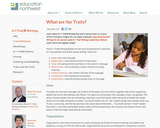
This article details the key qualities of strong writing.
- Subject:
- English Language Arts
- Material Type:
- Student Guide
- Provider:
- Education Northwest
- Author:
- Education Northwest
- Date Added:
- 04/23/2019

This article details the key qualities of strong writing.

This resource accompanies our Rethink 7th Grade ELA course. It includes ideas for use, ways to support exceptional children, ways to extend learning, digital resources and tools, tips for supporting English Language Learners and students with visual and hearing impairments. There are also ideas for offline learning.

This parent guide supports parents in helping their child at home with the 7th grade ELA content.

In this unit, students will be reading and writing myths following the structure of short stories and eventually publishing their own work.

The 7th grade poetry unit gives an in-depth approach to poetry. Included are worksheets, rubrics, and answers keys where applicable along with CCSS literature examples.
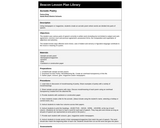
Using newspapers or magazines, students will create an acrostic poem where words are divided into parts of speech.
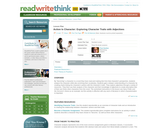
By "becoming" a character in a novel they have read and making lists from that character's perspective, students analyze the character while also enriching their vocabulary. Students gain a deeper understanding of a character by creating charts linking the character's actions with the character's traits. They explore adjectives through a variety of resources. They then use their analysis of the character and their knowledge of adjectives to create descriptive lists of their own three other characters from the novel.

Within the earth science strand of 7th grade science, students focus on understanding the cycling of matter in and out of Earth’s atmosphere. In this task, students discover the stages that lead to Earth’s current atmosphere, investigate the cycles that maintain the Earth’s current atmosphere, and write a fictional account of one of the cycles from that gas molecule/compound’s point of view. The analytical reading and diagram interpretation, as well as the creative writing nature of this lesson allow students to build content understanding while promoting 21st Century Skills. This lesson was developed by NCDPI as part of the Academically and/or Intellectually Gifted Instructional Resources Project. This lesson plan has been vetted at the state level for standards alignment, AIG focus, and content accuracy.

Students use Shakespeare's Secret, a featured title on the Teachers' Choices Booklist (International Reading Association, 2006), as a springboard to exploration of the controversy regarding the authorship Shakespeare's works. The novel makes liberal use of the historical details surrounding William Shakespeare's life, and exposes students to the possibility raised by some theorists that Edward de Vere, Earl of Oxford, was the true author of the works that have long been attributed to the Bard. Students explore the historical references in the novel and generate questions for further research. As they research these questions on suggested websites, they organize their findings with the help of the ReadWriteThink Notetaker. Then they work in small groups to create and present short dramatic skits that creatively connect the novel with the historical facts.
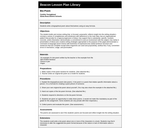
In this lesson, students write a biographical poem about themselves using an easy formula.
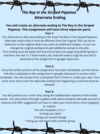
Students will create an alternate ending to The Boy in the Striped Pajamas. This assignment will have three separate parts.
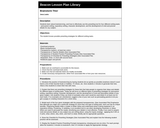
In this lesson, students will learn about brainstorming and how to effectively use this prewriting tool for four different writing tasks - persuasive writing, expository writing, character development, and the development of vivid and precise details for any subject.

In this lesson, students will select a piece of their own writing that contains dialogue then go through the piece highlighting the speech of each character in a different color. Then they will go through the piece again looking for and correcting "character clashes" that occur when two speakers are highlighted in the same paragraph.
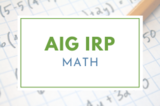
This task is to be used after students have been taught circles content including parts of a circle, the meaning of pi, circumference and area. This lesson was developed by NCDPI as part of the Academically and/or Intellectually Gifted Instructional Resources Project. This lesson plan has been vetted at the state level for standards alignment, AIG focus, and content accuracy.
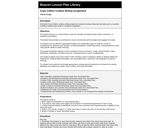
Students will develop characters as part of a narrative involving creatures that reside in a student's imagination.
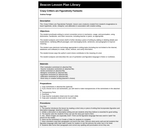
This lesson uses creatures created from students' imaginations to teach hyperbole, simile, metaphor, and alliteration in association with creative writing.
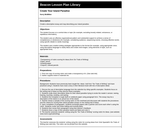
In this lesson, students practice writing descriptive essays.

This resource contains a large number of creative writing prompts to encourage the flow of ideas.

The story's narrator notices one morning that his nine-year-old son is ill. The boy reveals that while at school in France he heard that a person cannot live with a temperature over 44. The father explains the difference between the Fahrenheit and Celsius scales and tells his son that he is not going to die. In this CCSS lesson, students will explore this story through text dependent questions, academic vocabulary, and writing assignments.

In this lesson, students explore both facts and feelings about a topic and make self–text–world connections as they prepare a presentation using word-processing and presentation software. Possible topics span many content areas, including science (animals, climate, space), geography (landforms), and historical events. Students select photos from websites that demonstrate their content understanding and communicate their feelings on the topic. They write and record a two-minute descriptive or persuasive script and pair the script with the photos using presentation software. Students and teacher assess the effectiveness of the presentation using the rubric and handouts provided.